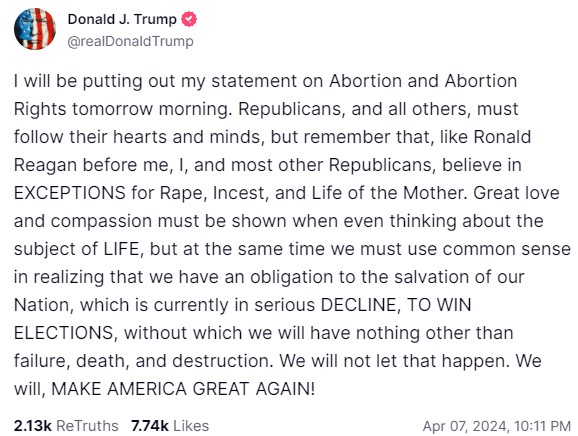This statement from the Judge Lamberth is so good – every word is worth reading. It’s that good. Bring your virtual cigarettes with you; you’ll need one after reading this. h/t rikyrah
Here’s a link to a browser version of the .pdf file of the whole thing.
PDF file that you can download: Jan 6 sentencing today by Judge Lamberth
Today, the Court sentenced Taylor James Johnatakis. The Court ordered that Mr. Johnatakis be committed to the custody of the Bureau of Prisons for a term of 87 months. The following are the notes that the Court used when delivering portions of its oral sentencing.
The Court has received over twenty letters from friends and family of Mr. Johnatakis. Those letters speak to Mr. Johnatakis’s good works, good nature, and good character. Most ask for the Court to release him right away. Many say he did nothing criminal on January 6 and is no danger to society. I appreciate that the defendant has, with exceptions, been courteous and respectful to the Court, and I harbor no personal animosity toward him. The Court agrees that Mr. Johnatakis, like many January 6 defendants, is not an inherently bad person. That is what makes these cases hard.
As the Court has said many times, I take no great pleasure in locking up defendants who led good lives until their actions on January 6, 2021. After thirty-seven years on the bench, the Court knows how disruptive a prison sentence can be for defendants and their families. Nevertheless, the Court cannot let people entirely off the hook for their actions that day. In light of the defendant’s supportive letters, the Court would like to take a moment to explain what it is trying to accomplish when it sentences a defendant such as Mr. Johnatakis for events arising out of the January 6 attack on the Capitol.
A society in which everyone does what is right by his own lights, where adherence to the law is optional, would be a society of vigilantism, lawlessness, and anarchy. As my late friend Justice Antonin Scalia once wrote, “[i]t is the proud boast of our democracy that we have ‘a government of laws and not of men.’” Morrison v. Olson, 487 U.S. 654, 697 (1988) (Scalia, J., dissenting). A person dissatisfied with the government or the law has various non-violent ways to express his or her views.
More below the fold.
The First Amendment protects freedom of speech. It also enshrines “the right of the people peaceably”—let me repeat, peaceably—“to assemble.” And history has shown there is some role for the civil disobedience of Henry David Thoreau and Martin Luther King, Jr., in which a citizen engages in principled and peaceful—let me repeat, peaceful—disobedience of the law in order to protest a perceived injustice. In that situation, the person acknowledges they have broken the law and accepts the legal consequences that follow.
But what the jury found Mr. Johnatakis to have done on January 6 was neither First Amendment-protected activity nor civil disobedience. As the Court has said before, “the First Amendment does not give anyone the right to enter a restricted area or to engage in riotous activity in the Capitol.” See United States v. Little (Little Notes for Resentencing), No. 1:21-cr-315 (RCL), 2024 WL 386718 (D.D.C. Jan. 25, 2024). It obviously does not give anyone the right to assault the police. Nor was the January 6 riot an act of civil disobedience, because it was violent, not peaceful; opportunistic, not principled; coercive, not persuasive; and selfish, not patriotic.
The portrayal of Mr. Johnatakis as either a peaceful protestor or someone simply swept up by the crowd does not match the reality established at trial. One thing that strikes me about the letters is that few of the authors seem to know what he actually did. One person even wrote me that they know he has never done anything violent and never would.
Perhaps Mr. Johnatakis has contributed to this misperception, because although he repeatedly expressed his “heartfelt and sincere” regrets at trial, see, e.g., Nov. 20, 2023 Trial Tr. at 71, ECF No. 256, since his conviction he has denied his conduct and downplayed the January 6 riot itself. But the Court knows the facts of this case because it has heard from the witnesses and examined the evidence, including police body camera footage and videos filmed by Mr. Johnatakis himself. The Court would therefore like to set the record straight about what Mr. Johnatakis did that day.
In any angry mob, there are leaders and there are followers. Mr. Johnatakis was a leader. He knew what he was doing that day. On January 5, he posted on social media: “[B]urn the city down. What the British did to DC will be nothing . . .” Trial Exhibit 904G. The next day, while marching to the Capitol, he recorded and posted a video in which he proclaimed “we’re walking over to the Capitol right now, and I don’t know, maybe we’ll break down the doors.” Presentence Report (PSR) ¶ 26, ECF No. 266.
Once he got to the restricted grounds of the Capitol, he made his way to the vanguard of the crowd, all the while yelling into the megaphone he had brought with him. PSR ¶¶ 27–29. As Metropolitan Police Department Captain David Augustine testified at trial, rioters eventually overwhelmed the police line and forced the officers to retreat up the Capitol’s Southwest stairs, under the scaffolding created for the inauguration.
The video played at trial shows that Mr. Johnatakis led the charge up the stairs. He soon reached a fallback line of barricades manned by police in order to protect the Capitol building itself and the Members of Congress, staff, and others inside. See PSR ¶¶ 29–31. When he got there, he waved on more people toward the police line, and through his megaphone barked commands to “pack it in!” PSR ¶ 32. So, although one of the letters claims that Mr. Johnatakis “set out with good intentions and ended up in a crowd of orchestrated out of control protestors,” in fact it was Mr. Johnatakis himself who organized protestors to violence that day.
Once enough rioters had heeded his calls and swarmed against the police line, Mr. Johnatakis deployed his megaphone to give encouragement and step-by-step instructions for overpowering the police. PSR ¶ 33. As he announced “one, two, three, GO!” he and his fellow rioters—including his co-defendants Craig Bingert and Isaac Sturgeon—picked up the metal barricades and slammed them into the police officers. PSR ¶ 33.
Mr. Johnatakis and the others then raised the barriers higher until they were about head-level with the officers, so that the mob could brawl with the officers without the barriers getting in the way. PSR ¶ 33. In the resulting melee, Mr. Johnatakis seized MPD Officer Juan Gonzalez by the arm. PSR ¶ 33.
Officer Gonzalez testified at trial that with Mr. Johnatakis holding his arm in place, he was unable to hold back the line of rioters or protect himself. Nov. 20, 2023 Trial Tr. at 67. By effectively disarming Officer Gonzalez, Mr. Johnatakis made him vulnerable to serious injury, or worse. Indeed, Officer Gonzalez said that during the assault, he felt like he had suffered a “serious injury” and perhaps even broken his leg. Nov. 20, 2023 Trial Tr. at 58. Another officer who was standing alongside this officer, Officer Marc D’Avignon, thought he was going to die. Nov. 20, 2023 Trial Tr. at 51.
As Mr. Johnatakis walked away from the Capitol, he recorded several videos in which he expressed his satisfaction with what had occurred and pride in the role he had played. He crowed that “for the first time since 1817 that Capitol was stormed” and that members of Congress were forced to evacuate. PSR ¶ 37. He boasted that the crowd was so “irate” that “we probably would have murdered a few of” the Members of Congress “had we seen exactly who they were.” PSR ¶ 37. He summed up his conduct: “I was on the front line. I was on the gate. I organized a push up to the Capitol because I felt like that is exactly what we needed.” PSR ¶ 37.
He also exclaimed that it was “1776 again,” as if he were fighting for freedom against a foreign oppressor, rather than battling his own elected, representative government. PSR ¶ 36.
As the Court has said before, “[o]n January 6, 2021, a mob of people invaded and occupied the United States Capitol, using force to interrupt the peaceful transfer of power mandated by the Constitution and our republican heritage.” Little Notes for Resentencing, 2024 WL 386718, at *3. There can be no room in our country for this sort of political violence.
The Framers designed our constitutional system so that the people govern through their representatives, according to law. Decisions are the result of elections, debates, and compromise. The people, through their representatives, decide. By contrast, those who think political ends justify violent means seek to replace persuasion with intimidation, the rule of law with “might makes right.”
Violence risks begetting a vicious cycle that could threaten cherished conventions and imperil our very institutions of government. In that sense, political violence rots republics. Therefore, January 6 must not become a precedent for further violence against political opponents or governmental institutions. This is not normal. This cannot become normal. We as a community, we as a society, we as a country cannot condone the normalization of the January 6 Capitol riot.
There’s more – the full statement can be found at the links up top.
Open thread.




